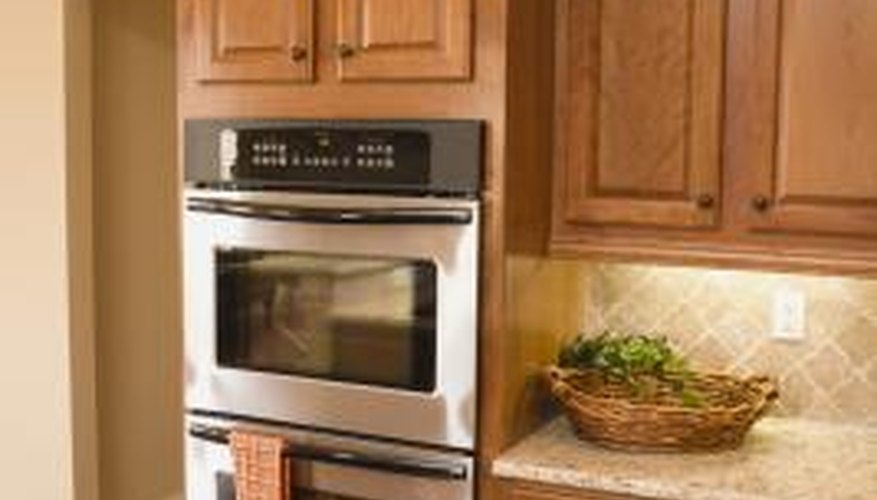Baked-on carbon in your oven can cause anything you bake in the oven, as well as your kitchen, to have a slightly burnt and unappetizing smell. These deposits result from grease and other food particles which have all the water inside of them baked out over time. The end result is a hard, crunchy crust of black carbon. Before cooking your next meal, try a simple method to remove baked-on carbon.
- Baked-on carbon in your oven can cause anything you bake in the oven, as well as your kitchen, to have a slightly burnt and unappetizing smell.
- Before cooking your next meal, try a simple method to remove baked-on carbon.
Turn off the oven if it is currently on. Allow the oven to cool before starting to clean off the carbon.
Open the oven door. Remove the oven racks.
Scrape out as much of the carbon and other debris inside the oven as you can with the nylon brush.
Mix the bicarbonate and water together until it takes on the consistency of a thick paste in a container.
Apply the paste to the carbon deposits in the oven with your hands. Allow the mixture to sit on the baked on carbon for at least half an hour.
- Scrape out as much of the carbon and other debris inside the oven as you can with the nylon brush.
- Apply the paste to the carbon deposits in the oven with your hands.
Scrape off the carbon underneath the paste with a wallpaper scraper or mud knife. Rinse off your tool when carbon begins to cling to the end and impede your scraping.
Rinse off any residue with fresh water from the sink and a sponge, if desired.
TIP
Mud knives, also called drywall knives, or drywall tools, are in the same section of the store that stocks drywall supplies.
WARNING
Don't use a metal tool to scrape the carbon deposits off your oven walls, as this can cause scratching.
